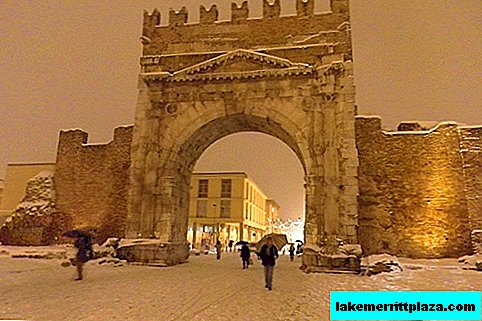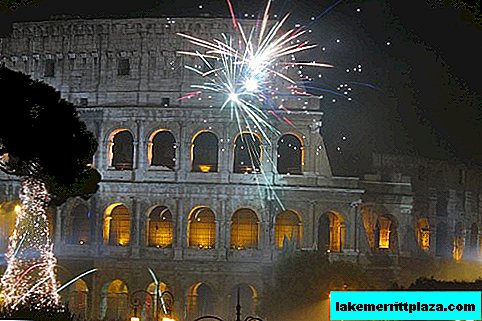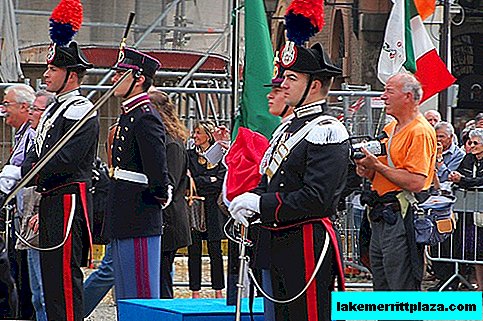A romantic nook in a real grotto overlooking the Adriatic Sea. In the Puglia region, the natural cave has been converted into an elegant hotel and restaurant
Visitors to this unusual restaurant enjoy beautiful views of the crystal waters of Polignano a Mare (Polignano A Mare), in the province of Bari. The largest grotto in the area, the Grotta Palazzese is certainly impressive in itself. But after in the very heart of enterprising residents set up a restaurant, this place became a real gem of the region.
The Palazzese Grotto is the largest and most famous of the eighty natural caves tearing the rocky coast near the tourist town of Polignano, in which only 17,000 inhabitants live permanently. You can get to the grotto from the road only by climbing a steep staircase, knocked out right in the rock.

At this point, the sea washed two large natural openings. Inside, we got a huge semicircular "hall" with a diameter of about 30 meters, in which they arranged the eponymous restaurant. It perfectly fits into the atmosphere of the ancient Puli village with its white houses, straight streets and breathtaking sea views opening from steep cliffs.
However, the restaurant owners were not the first to think of using the natural grotto for their own purposes. In the past, he played the role of a ballroom, which hosted receptions worthy of Versailles. At least, as the Neapolitan Duke of Leto claimed in the 1730s, he is the owner of Polignano. Then he allowed the inhabitants of the adjacent village to use the grotto to organize important events. Since then, the cave has become a meeting place for the high society of the region.

After the French Revolution and the abolition of feudalism, the grotto was abandoned somewhat. But still, every year in the summer from May to September, life returns to it. In addition to the working restaurant, which we already mentioned, it opened here 4 * Hotel Grotta Palazzese. The cliffs adjacent to the grotto have 20 guest rooms with views of the Adriatic and the historic center of Polignano. A restaurant with a limestone arch is located in the grotto itself and "looks" also at the Adriatic Sea. All furniture and restaurant utensils are made exclusively of natural materials in order to “mask” it in the surrounding nature as much as possible.

As for the price category of the hotel, the average price of a double room in the summer season 2014 is 140 € per night. Dinner in a refined restaurant will cost approximately 100 € per person. Of course, this hotel can be recommended to all romantics and lovers, for example, for a honeymoon or a surprise for a loved one.
See all hotels in Polignano a Mare
Check availability at Grotta PalazzeseSorry, this hotel is no longer affiliated with Booking.com.
How to get to the Grotto of the Palace?
Polignano a Mare is located about 40 km from the city of Bari, and 300 km from Naples at the very beginning of the “heel”.
- By rented or own car. You can rent a car in Italy for 50-70 euros per day. It is safer and more profitable to search for a suitable option using the search engine auto.italy4.me
- The regional train from Bari to the city of Monopoli will take you 23-33 minutes. A ticket costs 3.1 euros, trains depart every half an hour. You can buy a ticket directly at the Bari station at the box office or vending machines. The timetable can be checked on the official website of the Italian Railways www.trenitalia.com, we also recommend that you look at the “Instructions for independent purchase of train tickets in Italy”. From Monopoli to Polignano a Mare can be reached by taxi for 10-15 euros.
- The train journey to the Monopoli station from Rome (Roma) or Naples (Napoli) with a change in Bari will take about 5 hours.
- By plane to Bari airport, direct flight from Rome, Milan, Venice, Barcelona or Monaco, and from there renting a car to Polignano a Mare.








